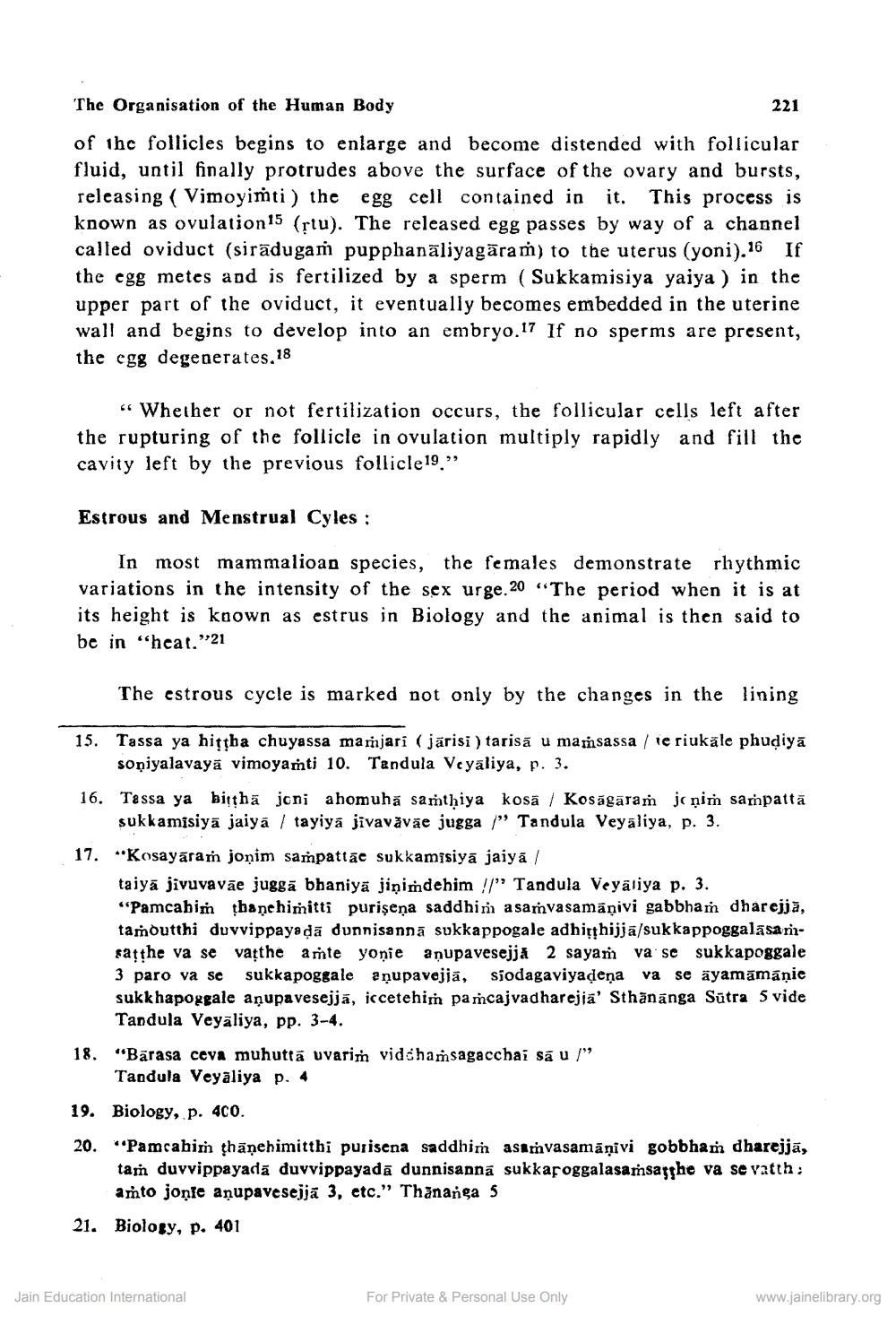________________
The Organisation of the Human Body
221
of the follicles begins to enlarge and become distended with follicular fluid, until finally protrudes above the surface of the ovary and bursts, releasing ( Vimoyimti) the egg cell contained in it. This process is known as ovulation 15 (stu). The released egg passes by way of a channel called oviduct (sirādugam pupphanäliyagāram) to the uterus (yoni).16 If the egg metes and is fertilized by a sperm (Sukkamisiya yaiya) in the upper part of the oviduct, it eventually becomes embedded in the uterine wall and begins to develop into an embryo. 17 If no sperms are present, the egg degenerates 18
“ Whether or not fertilization occurs, the follicular cells left after the rupturing of the follicle in ovulation multiply rapidly and fill the cavity left by the previous follicle19."
Estrous and Menstrual Cyles :
In most mammalioan species, the females demonstrate rhythmic variations in the intensity of the sex urge. 20 "The period when it is at its height is known as estrus in Biology and the animal is then said to be in "hear."21
The estrous cycle is marked not only by the changes in the lining
15. Tassa ya hiţțba chuyassa mamjari (jārisi ) tarisā u mamsassa / te riukāle phudiyā
soniyalavayā vimoyamti 10. Tandula Voyaliya, p. 3. 16. Tassa ya birthā joni ahomuhā samthiya kosa / Koságāram jonim sampattā
sukkamisiya jaiya / tayiya jivavăväe jugga / Tandula Veyaliya, p. 3. 17. "Kosayāram jonim sampattae sukkamisiya jaiya /
taiya jivuvaväe jugga bhaniya jinimdehim !/"' Tandula Veyaliya p. 3. "Pamcabim thanehimitti purişeņa saddhim a samvasamāṇivi gabbham dharejjā, tamoutthi duvvippayadā dunnisanna sukkappogale adhitthijja/sukkappoggalásarisathe va se vaţthe amte yonie anupavesejja 2 sayam va se sukkapoggale 3 paro va se sukkapoggale aņupavejjā, siodagaviyadeņa va se ayamāmāņie sukkhapoggale aņupavesejjā, iccetehim pamcajvadharejia' Sthānanga Sūtra 5 vide
Tandula Veyaliya, pp. 3-4. 18. "Bārasa ceva muhutta uvarim vidchamsagacchai sau !"
Tandula Veyaliya p. 4 19. Biology, p. 400. 20. "Pamcabim thāņehimitthi purisena saddhim asimvasamāņivi gobbhan dharejjā,
tam duvvippayadā duvvippayada dunnisanna sukkapoggalasaṁsayghe va se vatth:
aṁto joņie anupavesejjā 3, etc." Thānanga 5 21. Biology, p. 401
Jain Education International
For Private & Personal Use Only
www.jainelibrary.org




